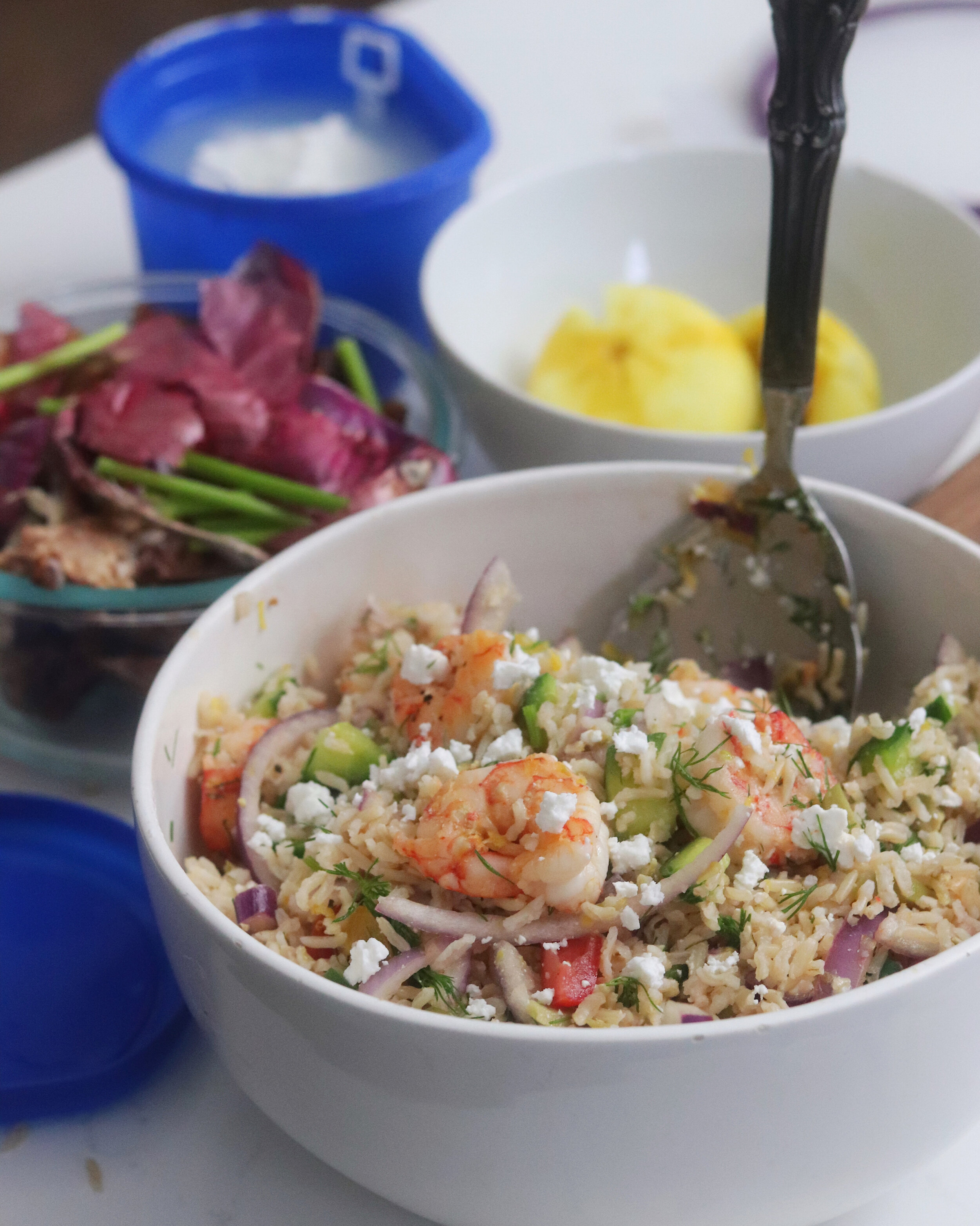So, here we are. Never thought I’d ever have to cook this way (and we will for sure cherish the next time we can shop, cook, and eat the way we did before). But these extraordinary times call for a new way to think about food.
Your grocery runs are limited and you have to lean more on pantry staples. You may have to feed more people, for more meals. And you’ll either have more time at home, or less time with the demands of family and other challenges raised when you’re all cooped up.
Like all of you, I’m still learning as I go. Here are some tips as you navigate this new way of cooking. I’ll be updating this post as I refine my techniques, so save this page and keep checking back!
COOK SIMPLE > COMPLEX
Set yourself up for leftover success. For example, start with separate preparations of rice, beans, and roasted vegetables. For the first meal, create a grain bowl with your favorite vinaigrette. Next time, use the rice to bulk up a soup. Puree the beans into a dip. Add the veggies to a frittata. Finally, mix the rice, beans, and vegetables with chili powder, cumin, and tomatoes (fresh or canned/jarred) for a Mexican-style dish. Notice — if you started with that last dish, you'd be way more limited with your leftover layup. Start simple.
CASE STUDY: Lemony Brown Rice Bowl with Shrimp
The bulk of this is made with long-lasting pantry ingredients — brown rice, lemon, red onion, feta, olives, and frozen shrimp. The fresh ingredients are there, but I’ve purposely pared back. I used just three mini cucumbers, a handful of grape tomatoes, and about three stems of dill (a side salad for me in better times, but times have changed).
The tough bottom inch of the dill stems, along with the onion skins, were saved. I’m freezing these with chicken bones from another night. Once I have enough scrap ingredients, I’ll make stock.
The olive brine flavored the rice, almost like a vinaigrette would (think: salt, fat, acid, umami). Feta brine would also do the trick.
MIX FRESH WITH SHELF-STABLE OR FROZEN
If you’re anything like me, you like lots and lots of veggies. Problem is, you’ll run out sooner that way. Better some fresh ingredients, for longer, than no fresh ingredients, sooner.
Add mushrooms to your boxed mushroom soup. Add cabbage to your frozen dumplings. You’ll stretch your fresh ingredients + boost the nutrition of your shelf-stable products.
A CARROT SAVED IS A CARROT EARNED
Reexamine your recipes and ask yourself:
Will this ingredient satiate me/ fill me up? (rice, beans, pasta, etc)
Will this satisfy me/ make me happy? (chocolate, cheese, etc)
Will this offer important nutrients? (kale, raw veggies, etc)
Is this ingredient critical to the taste of this dish?
Sadly, something like carrots in a stock doesn’t make the cut. The flavor is too subtle, and you’re boiling away all the nutrition. Save these ingredients for dishes where they will shine — in terms of taste, nutrition, and impact.
If you can’t bear to be without your classic mirepoix, use scraps in your stock — carrot peels, the base of your celery, onion skins and ends — items that would normally get thrown away.
BE FLEXIBLE WITH INGREDIENTS
The other day I made too much corned beef. So the next day I made split pea soup, then fried rice — both using corned beef as you might use ham. In more mobile times, I’d probably buy ham, but for now we use what we have.
EXTRACT AS MUCH FLAVOR AS POSSIBLE / NO WASTE
The rinds of your lemons. The bones of your chicken. The brine in your pickle jar or feta tub. These are great flavor enhancers that don’t require an extra trip to the grocery store. Before you throw anything away, think to yourself, how can I use this?
Additionally, we are accustomed to prepping our food a certain way. But many of these components are edible. Consider: the leaves of a cauliflower, the stems of soft herbs, the knobby end of zucchini, the broccoli stalk. In some instances, you will have to shave off the fibrous part or cook for a little longer, but otherwise, these vegetable parts are totally edible.
CASE STUDY: Kale, White Bean, Vegan Sausage Soup
The stock was made with not just a chicken carcass, but also the skin. Skin is not always added to stock, but I couldn’t throw it away. Skin adds a “roasted” taste, along with salt and fat — all components that ensure this soup isn’t as austere as its modest ingredients imply.
Use the stems of the kale. Just boil them a little longer than the leaves.
Did you know you can freeze bread? Just slice it (if it’s not already) and freeze. Oftentimes, I get little broken bits in my frozen bread bags which make them too small for normal bread usage. Here, I used them for cheesy crouton floats, and added the crumbs in the bottom of the bag into the soup itself (actually many of your favorite soups contain bread — ribollita, gazpacho…).
Got a parmesan rind? Drop it in the broth. You know how it goes by now. What’s normally thrown away can add fat, salt, umami — FLAVOR.
USE FRESH WHEN IT MATTERS, SHELF-STABLE WHEN IT DOESN’T
For example, right now I have fresh onions and I also have dried onion flakes. I’ll save the fresh as a taco topping, where the freshness is important. I’ll use the dried in a stew or soup, where the onions will melt away anyway.
LEAN ON INGREDIENTS THAT COUNT
When you’re making a meal, you’re assembling a team. Skip the wallflowers and go with the jacks and jills-of-all-trade. Sausages (meat or vegan) are great because they offer a trifecta of flavor — fat, salt, spice. When used in a soup, you can even get by using water instead of broth — it’s that flavorful. Other MVP ingredients — strong cheeses, bacon, ham, anchovies, fermented black bean paste, miso.
LET YOUR TECHNIQUE ADD FLAVOR
Improve your dish — without dipping into your food supply. Cut your ingredients small so you have the satisfaction factor in every bite. Brown the sausage, toast your bread, broil your cheese. The Maillard reaction lends complexity and depth by virtue of heat and time (ie: something you have in unlimited supply).
MAKE LESS FOOD
Of course, use food that’s about to go bad, but otherwise, try not to cook more than you can eat/ can tolerate eating day after day — especially if the dish doesn’t freeze well or you don’t have room even if it did. If you’re stress baking or cooking, halve recipes. You’ll get the same amount of stress-relief, with less waste.
How are you cooking differently these days? Share any tips, questions, or comments below!




